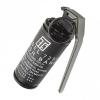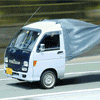Search the Community
Showing results for tags 'vehicle'.
-
https://www.youtube.com/watch?v=W42zsFYjZvM No wonder VW dry clutch fail so often in SG... too much start stop traffic here...
- 55 replies
-
- 5
-

-
- dual clutch
- gearbox
- (and 4 more)
-
http://www.mas.gov.sg/News-and-Publications/Media-Releases/2016/MAS-Eases-Rules-on-Motor-Vehicle-Financing.aspx Open Market Value of motor vehicle Maximum LTV* Maximum loan tenure Less than or equal to $20,000 70% (previously 60%) 7 years (previously 5 years) More than $20,000 60% (previously 50%
-
The Government's proposals to inject more fairness into the vehicle quota system have whipped up a vigorous debate and initial signs point to more people supporting, rather than opposing, the suggested moves. Motor traders, transport experts and online readers of The Straits Times are largely in favour of the proposal to impose a surcharge on motorists who buy more than one car. Announced by Transport Minister Lui Tuck Yew on Thursday, the idea was cheered by many yesterday. Said the president of the Motor Traders Association, Mr Cheah Kim Teck: "In a society like ours, there's just no need for anyone to own more than one car." Source: http://www.straitstimes.com/breaking-news/...ta-system-20130
-
Dear All, Say I purchase a Hybrid vehicle with OMV of $22,000 and CEVS rebate of $15.000. What would the scrap value of my car be? Thanks.
- 6 replies
-
- honda
- hondascrap value
-
(and 6 more)
Tagged with:
-
Anyone can advice whether need Vehicle Entry Permit to drive up to Malaysia? Thanks.
- 4 replies
-
- vehicle entry permit
- malaysia
- (and 4 more)
-
What gone wrong with the 3 vehicles rear lifted up into the air ? Could it be cross wind blown through that traffic junction ? Very strange isn't it ? https://www.youtube.com/watch?v=JhuYzIQ1Zos
-
Hi guys, Anyone know if there are any heavy vehicle parks that allows night parking using coupon?
-
Hello all, I know LTA has stopped issuing log cards already. So how I do I print my own vehicle's log card from the LTA web site? I tried navigating the LTA site and onemotoring.com site but could not find any specific link to do so. Please let me know if you know.
-
Hi i saw some vehicle in carmart that is significantly cheaper than same model / year vehicle. Stated as imported used, i understand that it is previously used in another county BEFORE the reg date in Singapore, other than that is there any other non benefit i should watch out for in such vehicle? I understand spare part difference may be possible also but the imported i am looking at is japan made thus its likely to be the same compared to a conti as conti have a lot of different variants. I calculated that i should benefit more from the lower buying price thus lower downpayment, lower monthly installment, less paid for interest also. Vehicle is stated with a additional info of : Additional Imported Used Vehicle. Eligible for PARF rebate. Please correct me if i am wrong. Thank you.
- 6 replies
-
- imported used
- advise
-
(and 5 more)
Tagged with:
-
continue from ....... http://www.mycarforum.com/index.php?showto...268&st=6420
-
just received letter from LTA, asked me to do vehicle inspection before renew road tax by Aug. I bought a 2nd car last year in October and the car was inspected at LTA. I learned that vehicle from 3-10 years old only needs to do inspection every two years. Does the inspection whcih I did when purchaing the 2nd car count for what LTA requires for road tax renewal? do I need to do it again this year?
- 23 replies
-
- 1
-

-
- inspection
- vehicle
-
(and 2 more)
Tagged with:
-
Just an amazing video all around. The run simulation in the acrobatic aircraft is mindblowing.
- 1 reply
-
- 1
-

-
- land speed record
- bloodhound
-
(and 6 more)
Tagged with:
-
Hey guys, Thinking of buying a new PI/ C&C Merc? Second hand? Unsure of how old really your car is? Whether the colour has been changed? Whether any parts have been retrofitted? Whether the leather is original Well dont worry because im providing a service. For a simple $15 I can provide you with a detailed print out / PDF of the vehicle you wish to check out. All i need is the chassis (VIN number) number and I can tell you when the vehicle was delivered to the port Whats the engine model number etc etc. What functions it came with What the owner changed. This is very important for prospective buyers Alot of not so upright dealers import elegance/classic variants and then "upgrade" to avant garde by just changing the grille and badging! Some unscrupulous ones even change the trim such that you cant tell unless you were to do a background check! Of course they dont change the internals for you! Others locally fit the AMG kit and then charge you for it! How else can you find out without guessing at the OMV?? Even for current owners dont worry because your vehicle may have some features that others dont. I can check any model for you from MB SBS bus to UNIMOG to W204,W212,W207 etc..
-
Think its not shared in this forum yet.... For those who is waiting for durian to drop.... think got to wait long long.... http://transport.asiaone.com/news/general/story/vehicle-growth-rate-cut-025-05-cars-hit-1m-mark-lta The Certificate of Entitlement (COE) quota for November 2014 to January 2015 will be 11,932. Bidding under this quota will start with the first COE bidding exercise in November 2014. The COE quota consists of the following components: a. Provision for 0.5 per cent per annum vehicle growth based on the vehicle population as at 31 December 2013; b. Replacement COEs for vehicles deregistered in the preceding three-month period of July to September 2014; c. Adjustments for changes in the taxi population, expired COEs, and over-projection of vehicle deregistrations in 2008/2009. 3. The next quota announcement for the bidding period of February to April 2015 will be made in January 2015. More new Category (CAT) C vehicles registered without COE bidding, under the Early Turnover Scheme (ETS) The number of replacements under the ETS has increased significantly since the enhancement of the ETS in March 2014. While the total number of deregistrations has not increased significantly, the replacements under the ETS have more than tripled, from about 20 per cent before the enhancement to 70 per cent in the third quarter of 2014. This means that more CAT C COEs are being made available directly in the market, rather than through the bidding system. While this leaves fewer CAT C COEs available for bidding, it also means that potential buyers can obtain new vehicles coupled with a ready COE, without needing to bid for a new COE through the open bidding system. Thus, the CAT C quotas for the quota period from November 2014 to January 2015 are also substantially lower. It is not, however, indicative of the total number of new vehicles that may be purchased and registered in that quarter, as many more COEs may be made available through direct registrations under the ETS. Nonetheless, COE quotas for bidding may be higher in subsequent quarters as deregistrations increase, based on the age profile of the existing CAT C vehicle population. Looking ahead: Ensuring the sustainability of Singapore's transport system With 12 per cent of Singapore's total land area already taken up by roads, there is limited scope for any further expansion of the road network. Priority for road growth will be given to serve new development areas and to facilitate bus movements to bring about a better public transport experience. The latter supports ongoing efforts to improve the quality and connectivity of our public transport network, which is set to undergo significant expansion over the next few years. Therefore, it is not tenable to keep to the same rates of vehicle population growth as before. Already, the number of vehicles on our roads is drawing near to one million. In view of this, the Land Transport Authority (LTA) will lower the vehicle growth rate. From February 2015 to January 2018, the annual vehicle growth rate will be lowered from the current 0.5 per cent to 0.25 per cent. This will be reviewed again in 2017. The lower vehicle growth rate is not expected to substantially impact the COE supply as this is determined mainly by the number of vehicle deregistrations. This is especially so in view of the generally rising trend of deregistrations in the coming years, as the COEs of many old vehicles expire. Reduced rate of contribution to CAT E To maintain a more stable supply of COEs in each COE category under a lower vehicle growth rate, the contribution rate to CAT E will also be reduced from the current 15 per cent to 10 per cent from February 2015 onwards. Currently, 15 per cent of COEs from deregistered vehicles in each vehicle category, CAT A to D, form the COE quota for the Open Category (CAT E). CAT E COEs can be used to register vehicles from any COE category. This provides structural flexibility for the vehicle mix to evolve over time according to market demand. This reduction will return more COEs from deregistered vehicles to their respective categories. The immediate effect on quotas available for each vehicle category is expected to outweigh the reduction in vehicle growth rate. - See more at: http://transport.asiaone.com/news/general/story/vehicle-growth-rate-cut-025-05-cars-hit-1m-mark-lta#sthash.BQvj31y8.dpuf
-

Traffic offences by heavy-vehicle drivers up 16%
Darthrevan posted a topic in General Car Discussion
More heavy-vehicle drivers seem to be getting reckless on Singapore's roads. Latest Traffic Police statistics revealed to The Straits Times show that the number of traffic violations committed by them has risen by 15.6 per cent in the past three years, from 10,882 in 2010 to 12,583 last year. Common offences include failing to wear seat belts, speeding and failing to drive on the leftmost lane of the expressway, a spokesman said. Accidents involving heavy vehicles accounted for about 9 per cent of the total number of accidents in the past three years. Source: http://www.straitstimes.com/breaking-news/...ers-16-20130717 -
Juz curious, anyone bought one of these b4? http://www.sgcarmart.com/used_cars/listing.php?CAT=20 Is the 10-yr COE valid from the time it's registered in Sg or from the original date of registration overseas? Eligible for full parf rebate?
-
my vehicle was direct front to back hit by a Msia Vehicle 6 mths ago... Police & orange Force arrived ( i am on ntuc insurance) , & i went to do a 3rd party claim one of ntuc authorized workshop say they will do the claim for me & proceed to do the repair work for me.. Now they called me saying they cannot find the msia insurance company & want me to do the following 1) Find the msia driver myself & take the money from them 2) Pay for my own damages for the repair which they had already completed. 3) Claim my own insurances. is it the right way to do it ?
-
Mirai which is 'future' in Japanese is Toyota's production fuel cell vehicle. It will arrive for the summer of 2015 in European and American markets while Japan receive the first cars at end of this year. Japanese premier test-drive a Mirai last month and give the thumb up. Watch a video.
-
By right commercial vehicle not suppose to enter JB, unless got wadever licence or road tax. Was thinking could i drive my company kangoo into JB? using the by left way. Anyone had tried driving commercial in and manage to siam the authorities, or what will be the consequence if i kana booked? If i not wrong, diesel vehcile not affected by the 3/4 tank rule, so i can go in empty tank to pump.
- 16 replies
-
- 1
-

-
- Driving
- commercial
-
(and 3 more)
Tagged with:
-
http://singaporeseen.stomp.com.sg/stomp/sg...has_to_pay.html Malaysian driver gets into accident here, but S'porean has to pay and pay STOMPer evolution was annoyed to learn he won't be able to file an insurance claim against a Malaysian driver after the latter caused an accident which damaged his car. The STOMPer wrote:
-
http://www.lta.gov.sg/content/dam/ltaweb/corp/PublicationsResearch/files/FactsandFigures/M03-Car_Regn_by_make.pdf even if so many bad comments out from this forum, but impressed VW still made brilliant sales figure in 1st quarter of 2014, major contribution comes from Jetta how to interpert?
- 55 replies
-
- volkswagen
- interpert
-
(and 3 more)
Tagged with:
-
If got another vehicle block you and you cannot come out from the parking lot, how ar.. Keep sounding horn also no use. Driver never appear. How?
-
The scene of an accident on Monday involving a tipper truck and a car at the junction of Tampines Street 45 and Tampines Avenue 9. The tipper truck involved in a recent accident at the Tampines junction where two young brothers died a year earlier came from the same construction site as the cement-mixer truck that killed the boys. With new projects lined up at the site near Tampines Street 45, residents fear this means more heavy vehicles plying the roads in the area and greater danger for children especially. "Having many heavy vehicles ferrying construction material in and out all day long right smack in a school zone is very dangerous," said housewife Christina Tan, 48, who lives on Tampines Street 45. "These heavy vehicles shouldn't be so near such a populated road where lots of people walk to and from school." Accidents involving heavy vehicles have come under the spotlight after Nigel Yap, 13, and his brother Donavan, seven, were fatally hit by a cement-mixer truck in January last year at the junction of Tampines Street 45 and Tampines Avenue 9. The driver responsible, Munir Mohd Naim, was jailed for two weeks on Monday for negligence. Source: http://www.straitstimes.com/breaking-news/singapore/story/tampines-residents-face-heavy-vehicle-hazard-20140130
- 10 replies
-
- tampines
- heavy vehicle
- (and 5 more)
-
Why is it that reducing waiting and in-vehicle times does not seem to make public transport users happy? The debate on improving public transport service quality and affordability is unending. Suggestions have ranged from having more competition to ensuring efficiency to zero fares and even the nature of public transport itself. These discussions, however, skirt the central issue. A journey by public transport is actually a chain of trips. A trip from an origin to a destination typically consists of walk time to the bus stop or MRT terminal, wait time, in-vehicle time and access time to the final destination. The time of each component will vary by mode, distance travelled, trip purpose (i.e. office commute, shopping, social) and by time of the day. When a transfer between modes is involved, this makes the total time travelling by public transport unattractive compared to travel by car. In recent months, laudable efforts have been made to improve wait and in-vehicle times of bus and MRT rides by increasing the fleet of buses and reducing the time between train arrivals. In 2008, the Land Transport Master Plan (LTMP) stated: "Average public transport journey times will be reduced from 1.7 times of that by car today to 1.5 times by 2020 to make public transport more competitive relative to cars. "Our end in mind is to have a public transport system that will be so attractive that users with choice, i.e. those who can have access to cars, will say that 'my other car is a bus or train'." The 2013 LTMP focuses on addressing the four main components of the typical public transport journey - the first and last kilometre, wait time and in-vehicle time. This is being done through improvements such as seamless connectivity from home to terminal, more public transport infrastructure and investments in operating assets. A 2001 study by Professor Mark Wardman at the University of Leeds' Institute for Transport Studies in the UK has shown that walking and waiting times are perceived as being between two and three times more annoying than in-vehicle time regardless of the level of traffic congestion. These assessments will vary across circumstances, such as a journey to work versus participation in leisure activities. It will also vary when compared with in-vehicle time by car, bus or the MRT. The number of transfers, whether involving crossing a bridge or a long walk in-between, will also influence the way people perceive walk and wait times. So will the extent to which access involves pedestrian delays at junctions and crossings. In fact, the level of irritation caused by walk and wait times can be 1.5 to 8 times the perceived value of in-vehicle time. The point, therefore, is to view accessibility and mobility as a total experience. Minimising in- vehicle and wait times is just one aspect of the experience. It involves making the trip a pleasant one from the time a person steps out of the home to the time he arrives at his final destination. Making public transport the backbone of a city's mobility requires giving the public transport user priority. It entails minimising pedestrian delays and creating walkway connectivity within the city. But it will also mean making it more costly to drive into and park within the Central Business District. Electronic Road Pricing and limited parking facilities will lead to a more efficient allocation of scarce city space. Prioritising public transport may mean the development of "closed urban areas" where buildings are interconnected by sheltered pedestrian walkways. Walking - and perhaps cycling - will be a safe, healthy, viable and a delightful experience. Within the closed urban area, cars will not get priority. The "first and last kilometre" will then be an attractive link in the public transport trip. The 2013 Land Transport Master Plan and the just-released Fare Review Mechanism Committee Report are steps in the right direction if effectively implemented. Further, the Fare Review Mechanism Committee Report, in addressing the needs of the economically disadvantaged, enhances accessibility to jobs and centres of human capital development such as institutions of education. This together with real-time public information about public transport schedules might just nudge car users at the margin to use public transport. It might also lead to the spreading of the peak period when commuters choose to travel at alternative times, ease human congestion at MRT stations and bus terminals, and make the journey by public transport a pleasant experience. -- ST FILE PHOTO by Anthony Chin The writer is associate professor of transport economics, deputy director of the Singapore Centre for Applied and Policy Economics, and director of the Economics Executive Programme, NUS.













